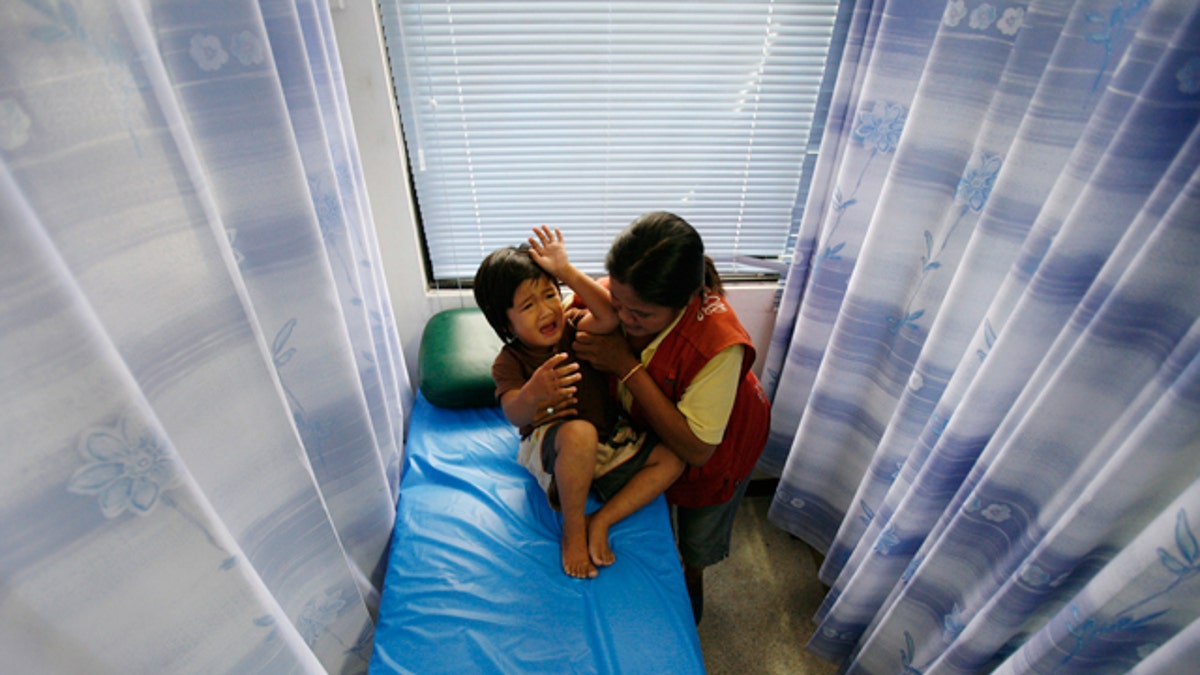
The privacy curtains that separate care spaces in hospitals and clinics are frequently contaminated with potentially dangerous bacteria, researchers said in Chicago this week.
To avoid spreading those bugs, health care providers should make sure to wash their hands after routine contact with the curtains and before interacting with patients, Dr. Michael Ohl, from the University of Iowa, Iowa City, said at the 51st Interscience Conference on Antimicrobial Agents and Chemotherapy.
"There is growing recognition that the hospital environment plays an important role in the transmission of infections in the health care setting and it's clear that these (privacy curtains) are potentially important sites of contamination because they are frequently touched by patients and providers," Dr. Ohl told Reuters Health.
Health care providers often touch these curtains after they have washed their hands and then proceed to touch the patient. Further, these curtains often hang for a long time and are difficult to disinfect.
In their study, Dr. Ohl and his team took 180 swab cultures from 43 privacy curtains twice a week for three weeks. The curtains were located in the medical and surgical intensive care units and on a medical ward of the University of Iowa Hospitals.
The researchers also marked the curtains to keep track of when they were changed.
Tests detected Staphylococcus aureus bacteria, including the especially dangerous methicillin-resistant S. aureus (MRSA), as well as various species of Enterococci -- gut bacteria -- some resistant to the newer antibiotic vancomycin.
Dr. Joseph Rahimian, an infectious disease doctor in New York City, said this finding comes as no surprise to him.
"Just about everything is going to have bacteria on it, and items such as fixtures in patient rooms will undoubtedly have bacteria including resistant bacteria," Rahimian said. "The curtains generally do get washed and changed, but the frequency varies among hospitals. I suspect that more frequent cleaning of hospital curtains would be a good idea."
The researchers used additional tests to identify specific vancomycin and methicillin-resistant strains to see whether the same strains were circulating and contaminating the curtains over and over.
The study found significant contamination that occurred very rapidly after new curtains were placed.
Of the 13 privacy curtains placed during the study, 12 showed contamination within a week.
Virtually all privacy curtains tested (41 of 43) were contaminated on at least one occasion.
MRSA was isolated from one in five curtains, and vancomycin-resistant Enterococci (VRE) from four in 10. Eight curtains were contaminated with VRE more than once. Three of these were of a single type, but the other five showed contamination with different VRE strains, which suggested recontamination was happening with bacteria from new sources.
Overall, two thirds of the swab cultures were positive for either S. aureus (26 percent), Enterococcus species (44 percent) or various bacterial species from a group known as gram-negative rods (22 percent).
"The vast majority of curtains showed contamination with potentially significant bacteria within a week of first being hung, and many were hanging for longer than three or four weeks," Dr. Ohl noted.
"We need to think about strategies to reduce the potential transfer of bacteria from curtains to patients," he added. "The most intuitive, common sense strategy is (for health care workers) to wash hands after pulling the curtain and before seeing the patient. There are other strategies, such as more frequent disinfecting, but this would involve more use of disinfectant chemicals, and then there is the possibility of using microbial resistant fabrics. But handwashing is by far the most practical, and the cheapest intervention."
Reuters contributed to this article.
